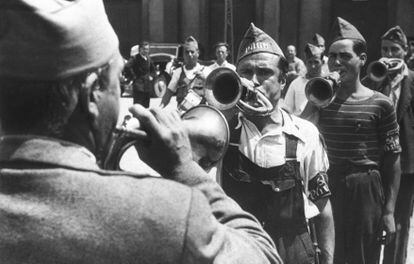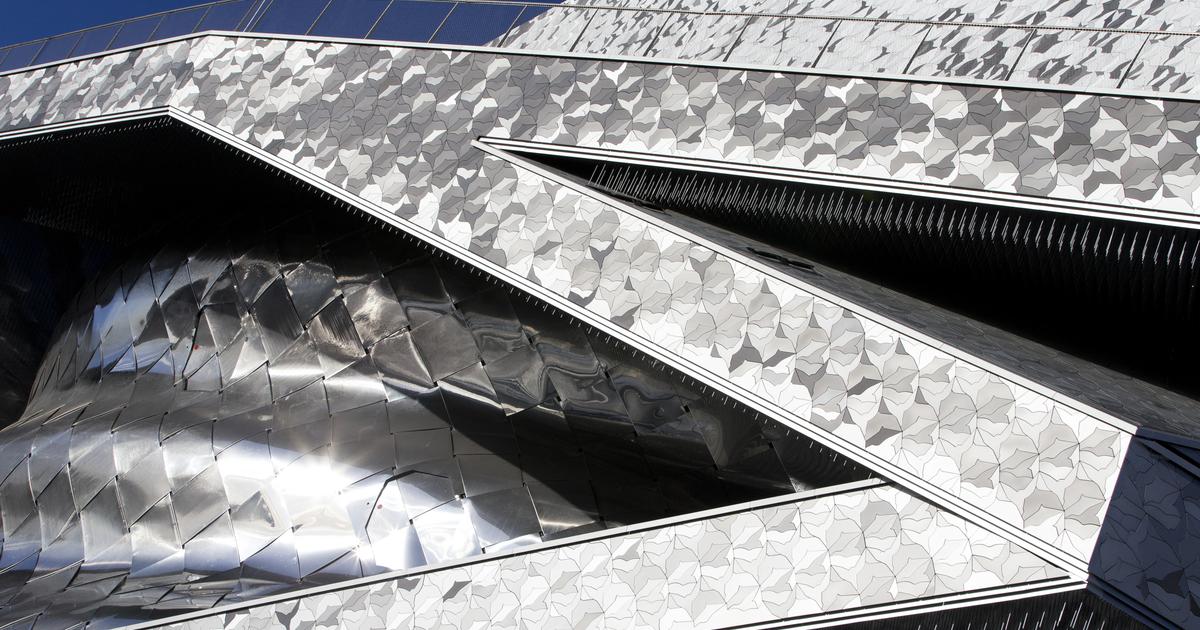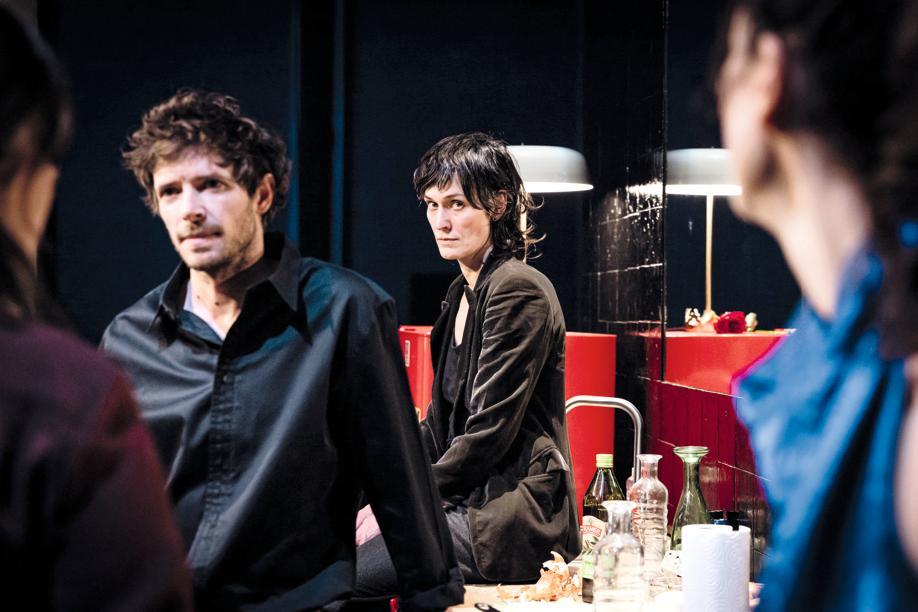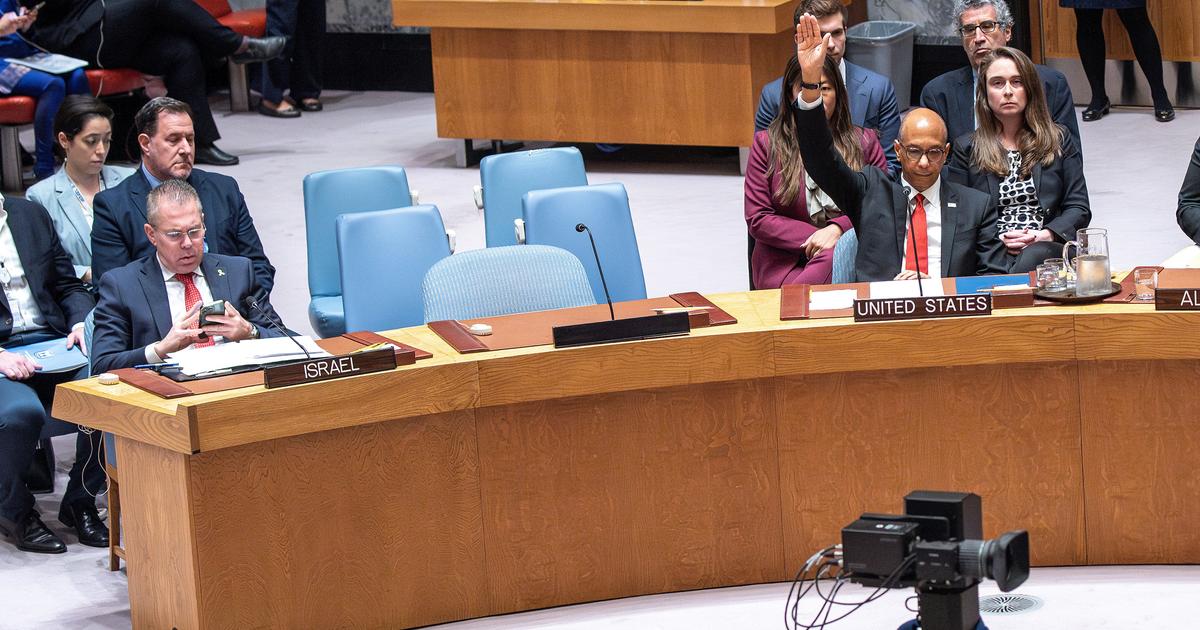The police arrived at the POUM headquarters at 12:30. They went up to the first floor of the Rambla dels Estudis building in Barcelona. Andreu Nin and other leaders of the Marxist Unification Workers' Party were arrested. Nin led it because his comrade Joaquín Maurín was imprisoned (at that time, they believed him dead). June 16, 1937. Two Stalinist espionage agents took him to Valencia by car. Behind it was another vehicle with more members of the secret police. After a few hours he was transferred to Madrid. He was first held in a center of the Special Police Brigade on Paseo de la Castellana. On the 19th they took him to a chalet in Alcalá de Henares where the couple of communist leaders Ignacio Hidalgo de Cisneros and Constancia de la Mora lived.
Everything was going according to the plan drawn up by Orlov, head of Soviet espionage in Spain, who had the collaboration of local agents who moved between the sewers and counterintelligence: it was about associating the leaders of the revolutionary party to a conspiracy hatched by the fifth column of Madrid.
They invented tests.
Earlier, a national and international story had spread that presented the Poumists as accomplices of fascism.
On the 18th, Nin signed a declaration;
the 19, two, the 21, the last.
He neither blamed himself nor blamed his comrades.
His face was already disfigured and his body shattered.
Orlov decided to execute him.
His remains are still unaccounted for today.
It was a Spanish case that replicated an international dynamic: that of the professional revolutionary
Local of the POUM in Rambla dels Estudis de Barcelona.
The last days of your life are like a hidden puzzle. His companions began to unearth him when recalling the last hours of the 16th. With historiographical rigor, Francesc Bonamusa and Pelai Pagès took his witness. The great documentary
Operation Nikolai
marked a turning point thanks to access to KGB archives. In the General Cause of the Franco regime, Fernando del Castillo discovered documents that made it possible to identify those involved in the Madrid conspiracy. The story could not be more attractive. The kidnapping, torture and murder of Nin is such a sinister episode that, to a large extent, it has erased the possibility of critically understanding the trajectory of one of the pillars of communism in Spain.
This trajectory was summed up by himself on that fateful June 21. Nin began that last statement by saying that she was born in El Vendrell and ended by stating that "it has nothing to do with the espionage issue that is accused of her." It was infamy. His life had been a Spanish case that replicated an international dynamic of the first quarter of a century: an example of the professional revolutionary whose paradigm Lenin embodied. This parable is tried to reconstruct by the historian of cultures from the first half of the 20th century, Andreu Navarra. The result is
The Impossible Revolution,
a willful and stuffy biography that synthesizes what is already known.
Nin was born in 1892 and at the age of 13 she published her first article in Catalan. That shoemaker's son was an adolescent socialized in the common denominator of Catalanism. But after two years he already showed a certain social sensitivity and was linked to the internationalist utopia of Esperanto. He had begun to travel along a narrow road under construction, which he continued on when he settled in Barcelona, and which ended up compacting in the articulation of successive proposals for revolutionary combat in Catalonia. And from Catalonia, he waited, then for Spain and the world. He came to that utopia after having taught workers - he was a teacher, he made pedagogical forays - after having been active in political associations from very early on and having written in the highly ideological press. The democratic way was not the way. As he wrote after a UGT congress,the solution was to articulate the working class in an international of trade unions.
The myth of the Red October did not stop burning in his conscience: a fire that sets fire to democracy
A POUM troop during the Civil War Keystone-France / Gamma-Keystone via Getty Images
They are ideas outlined in articles that hardly anyone read, but his life will consist of systematically searching for the way to achieve the workers' conquest of power.
The marginality, the arrests, or the persecution would not matter.
In his case, the exceptional thing turned out to be the faith of the propagandist who founded his life on parties and associations and preached an ideology that legitimized Leninist action to assault power.
"A pure Bolshevik", in the definition of Professor Navarra.
"One of the Spanish intellectuals who best fit into the category of extremists manufactured by the absurd and violent chaos unleashed between 1914 and 1918."
If the young man thought that the socialist party could be the instrument for the conquest of power for the proletariat, he discarded it after the Revolution of 1917. The myth of the Red October did not cease to burn in his conscience. The myth of Nin was revolutionary fire that sets democracy on fire. He joined the CNT, and shortly after, at an anarchist union congress in Madrid, he publicly broke with democratic socialism. “I am an admirer of the Russian Revolution because it is a reality. I am a supporter of the Third International because it represents a principle of coexistence of all the purely revolutionary forces that aspire to implant communism in an immediate way ”. From rally to activism on a continental scale. In a clandestine meeting, the CNT decided to attend the founding congress of the Red Trade Union International in Moscow. Year 1921.When Trotsky arrived - the forger of the Red Army - he was introduced to the Spanish delegation. They made a request: weapons for the revolution in Spain.
1935 POUM poster.Universal History Archive / Universal Images Group via Getty
On the way back to Barcelona, he is arrested in Berlin.
The Spanish authorities accuse him of participating in the anarchist conspiracy that assassinated the president of the Council of Ministers, Eduardo Dato.
Expelled from Germany, he returned to Moscow.
It did not take long for him to be co-opted as a bishop for the expansion of the new Communist Trade Union International.
The CNT had split from the body, but Nin was one of its main figures.
He traveled, wrote pamphlets, preached internationalism as a catapult against fascism and in favor of revolution.
He was part of the
nomenklatura
of the privileged, he lived with his new family at the Lux hotel.
But the lights of power faded when he opted for Trotsky in the fight for the succession of Lenin.
Confined to the hotel and expelled from the Communist Party in the summer of 1928, he began to earn a living by translating frantically. Judit Figuerola studied it. Until he was able to leave the USSR. He continued to act in a Trotskyist manner, possessed by the fire of the international revolution. In September 1930 he arrived in Barcelona and, more than as a politician, his fame will be as a translator: mediator of Marxist thought in Spanish, introducer of the Russian novel in Catalan prose. But his life project, on the margins of radicalism, was fused with the battle of which he spoke by letter with his best interlocutors: the anti-Stalinists Trotsky, Víctor Serge and Joaquín Maurín. For all of them, liberal democracy was mutating into fascist regimes whose function was to maintain the privileges of the bourgeoisie.This is how he interpreted the passage from the monarchy to the republic: as a hidden revolution.
Before his execution, he neither self-blamed nor blamed his comrades.
His remains remain unaccounted for
Portrait of Andreu Nin.Universal History Archive / Universal Images Group via Getty
From the first moment he reasoned against that trap. Against democracy and for the revolution. The party was needed,
soviets
were needed
. “What is lacking is a party that concretizes that revolutionary consciousness in precise formulas and organizes the masses for action. This party does not exist yet, although there is potentially an intense communist spirit in the country. The working class must be given that indispensable instrument for its emancipation. A great revolutionary party of the proletariat must be forged by unifying all the communist forces and endowing them with a clear and precise program ”. But one thing was the ideas on paper, dogmatic, and another, the reality of the masses.
And in October 1934 the masses were activated. Nin has participated in the design of one of the explosion engines devised by Maurín: the Alianza Obrera. "Unite to achieve the same end", Nin told the modern journalist Irene Polo, "the domination of fascism through the conquest of power by the working class." For him, the revolution in Asturias had reinvigorated the myth of October 1917 and he wanted a project in the present by creating the POUM, a heterodox Marxist party. He participated in the elections of February 1936 integrated into the Popular Front. Maurín, its leader, won the act of deputy. The party's discourse was still democratic sabotage. And with the collapse of the state after the counterrevolutionary coup, the conditions were created to turn the myth into reality:When the workers stopped the insurrection in Barcelona, he saw the fuse of the revolution reignited. And the fire blinded him.
Demonstration of the POUM and other republicans in Barcelona, 1936. Universal History Archive / Universal Images Group via Getty
In the chaos, between looting and assassinations, Nin - pure as fanatics - glimpsed the hope of a liberating revolution whose cross was violence.
"You already know how the problem of the Church has been solved: there is no Church left in Spain."
He said it in September at a rally.
In the same place, after a few months, the same record.
"We play the same historical role as that of the Bolsheviks of the revolution."
But the institutional effort to restore a precarious order put an end to that myth.
To defend itself, the Republic relied only on Soviet aid.
When the weapons arrived, in addition to the payment in gold, another price was paid.
Nothing happened that they had not reported in
the battle
, the match diary.
Stalinism liquidated its dissidents.
On June 16, 1937, at midmorning, on the first floor of the POUM headquarters, two policemen arrested Andreu Nin.
Independence connection
That letter from Eugeni Xammar to Josep Pla in March 1924 was talking about assassinating Alfonso XIII. Objective: to shoot the King. On the high seas, when he was sailing in the San Sebastián regattas. And then find a way out for the assassins. One option would be to have his friend Andreu Nin. "He would enter into the matter to provoke a communist revolution in Spain." A few days later, Xammar, who lived in Berlin, wrote to Nin, but we do not know the answer. What is certain is that Nin, responding to their request, gave Pla and Xammar directions to prepare a trip to the Soviet Union. The motivation was journalistic: after their first series of articles in Germany, they wanted to do another in Russia. They arrived in July 1925 and Nin would be their host. Pla told it in the portrait that he dedicated to him much later, and what he did not tell there is something that seems obvious:The materials he used to write his successful 'Rússia' —translated into Spanish and prefaced by Marta Rebón— were provided by Nin and, on several pages, Pla limited himself to adapting them to his prose. The last chapter already referred to the Trotsky case.
Three months later, with a false passport, the one who arrived in Moscow was the exile Francesc Macià. Having ruled out various options, he also saw the Soviet Union as a possible ally to end the dictatorship of Primo de Rivera. He asked for money and weapons. In this way the conspiracy that he and his recruited paramilitaries fantasized around the separatist acronym of Stat Català could be advanced. Macià arrived in Moscow with a Catalan delegation of three or four people on October 24, 1925, he settled in the Lux hotel and the first thing he did was to telegraph Nin so that she would know that they had arrived. As Ucelay and Esculies recounted in 'Macià al País dels Soviets', they had reports exposing their plans.
The key meeting was held on November 13 at the headquarters of the Comintern. Nin participated as a translator. The interlocutors of the Catalans were leading figures, in addition to José Bullejos —the general secretary of the PCE, who had already informed the two leaders that neither in Catalonia nor in Spain were the conditions for a revolution in place. "Only after the political conditions of the revolution matured could the technical problems of the insurrection arise." Macià did not throw in the towel. He said he intended to create an army of volunteers as Garibaldi once did. Nikolai Bukharin - a member of the Political Bureau - found it extravagant. He wrote two lines on a piece of paper that he passed to a tablemate. "The most important thing: the separatist is too old, and the communist, too young."
The impossible revolution.
Life and death of Andreu Nin
Author:
Andreu Navarra.
Publisher:
Tusquets, 2021.
Format:
384 pages.
22 euros.
Buy for € 20.90 on Amazon
Look for it in your bookstore
You can follow BABELIA on
and
, or sign up here to receive
our weekly newsletter
.















